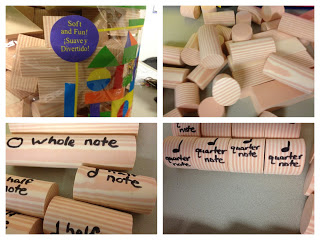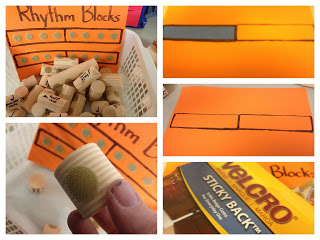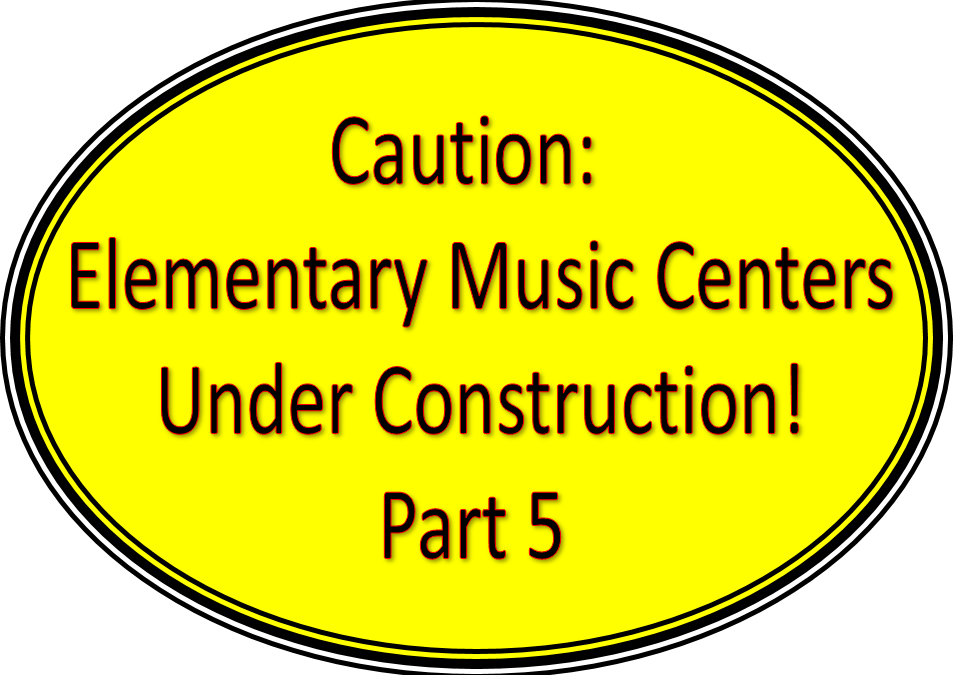 Sometimes you just stumble upon the right thing and inspiration occurs!
Sometimes you just stumble upon the right thing and inspiration occurs!
That is exactly what happened when I visited Hobby Lobby over spring break.
I looked over and noticed this bag of soft geometric blocks…… The price was reasonable and it seemed to be something that I could easily replicate if I liked it.
 I sorted the blocks and found that I had enough cylinder blocks to make one game and enough rectangle blocks to make a different game.
I sorted the blocks and found that I had enough cylinder blocks to make one game and enough rectangle blocks to make a different game.
Today I’m going to tell you about my cylinder game because that is the one that has worked best. Based on the number and size of the blocks I decided to create a center that started with whole notes and used half notes, and quarter notes. I also created blocks that were half rests and quarter rests.
Then I took some 8.5×11 sheets of craft foam and got out my marker. I measured and discovered that my masking tape was just about the same width as the cylinders, so I cut it into the correct length and started tracing.
I realized pretty quickly, that I would need a way for these rolly polly cylinders to stay in place, so I added Velcro. I put four soft Velcro “beats” inside each outlined “measure”. Then I put the scratchy Velcro dots on each block. I’ll admit that I was pretty skeptical I really didn’t think that the Velcro would last past the first class. I thought for sure that my students who are pretty hard on materials would tear this center up the first time I got it out.
I’m so pleased to tell you that it WORKS! These Velcro pieces have been handled with all of the energy my students can dish out, kindergarten through 5th grade, gentle and rough handling and we still have a perfectly intact center with all of it’s parts. I think that maybe the foam blocks and the foam sheet have an easier time adhering to the Velcro than if I had created this center using laminated tag.
In kindergarten this center is a “pre-skill”. I want them to understand that it takes 1 or 2 or 4 blocks to fill in the square. Although I tell them what the notes are and although they have practice with quarter notes, I’m trying to “play” them into the relationship between the notes. The placement of the Velcro helps reinforce this…. it makes it difficult to overload a measure. When the students arrange their “songs” to their satisfaction then they bring them to me and I read them. They love love love love love it!
1st grade is similar, but with more independence and with the expectation that they will read what they know.
By 2nd grade, I can go two different directions with this center I ask the students to either dictate a rhythm pattern from a known song, or I ask them to create something original. If they create something original, then they have to copy their work onto a piece of paper that they then turn in for a grade.
In 3rd, 4th and 5th, it would be nice to have sixteenth notes, but it also is really great practice for them to revisit some rhythms they’ve known for a while. Also, with the older students, I challenge them to see how many different patterns they can create. Since they don’t stay in centers very long, this keeps the motivation high even at this simple center that doesn’t have the same “curb appeal” that some of the others have.
Caution! Elementary Music Centers Under Construction – Part 4
Caution! Elementary Music Centers Under Construction – Part 3
Caution! Elementary Music Centers Under Construction – Part 2
Caution! Elementary Music Centers Under Construction – Part 1


Ooh, great use of materials. I am going to have to check out my local craft store!
~Shannon